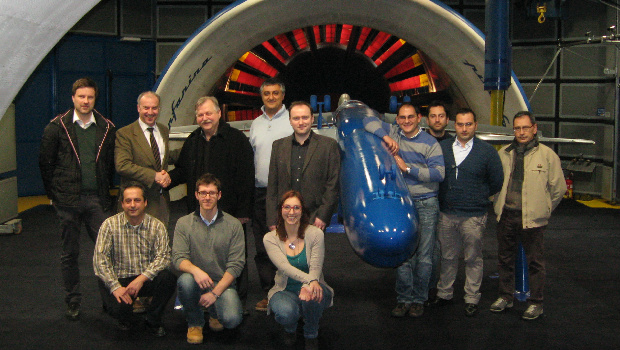Engineers at Trinity College Dublin have been chosen to lead a third EU consortium which will significantly reduce the noise pollution of a aircraft design being developed in Europe.
The €1.4 million ARTIC project is a collaborative effort developing quieter landing gear system for the next generation of Green aircraft. The project will be run via Clean Sky (FP7), a public-private partnership between the European Commission and the Aeronautical Industry. Clean Sky was set up with sustainable development in mind, and associated projects seek to bring significant changes to the way aeroplane manufacturers design and develop new equipment in response to their damaging environmental impact.
Assistant professor in Mechanical and Manufacturing Engineering at Trinity, Dr Gareth J. Bennett, explained: “The standard plane we hop on to fly to Paris is fuel-inefficient for such a short-haul distance. In addition, the fuel and noise emissions into our environment need to be reduced. The Clean Sky Partnership will result in a replacement aircraft design which will be significantly greener, and it will happen soon.”
ARTIC will build on previous work by Dr Bennett and his team on two other Clean Sky projects, WENEMOR and ALLEGRA, which deal in open rotor propellor and noise abatement technologies respectively.
All three projects coordinated by Trinity will contribute directly to the Green Regional Aircraft EU programme, directed by Alenia Aermacchi.
The WENEMOR consortium designed and built a 1/7-scale aircraft and cutting edge design Counter Rotating Open Rotor propeller engines, while the ALLEGRA team are testing noise reduction technologies.
After testing the new landing gear design, Dr Bennett and his team will now make the equipment and underside of the GRA aircraft at full-scale as a main component of project ARTIC. They will put the combined model through its paces in the largest wind tunnel in Europe, which is 20m high and located in Holland.
“Testing such a design at this scale has never been done before in Europe and the EU Aviation industry is eagerly awaiting our results. It is very exciting to be part of this project, which I’m sure will make a huge contribution to improving the sustainability of air transportation in the coming years,” said Dr John Kennedy, a research fellow and senior technical manager working across all three projects.
TechCentral Reporters








Subscribers 0
Fans 0
Followers 0
Followers